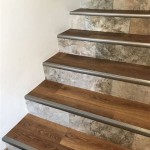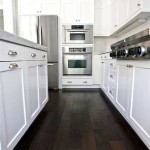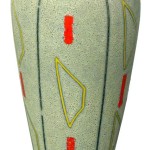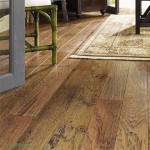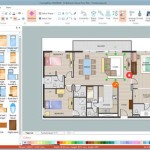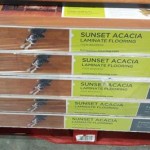```html
Hardwood Floor Installation San Francisco: A Comprehensive Guide
San Francisco, with its diverse architectural styles and demanding aesthetic standards, presents unique challenges and opportunities for hardwood floor installation. The city's climate, the age and construction of its buildings, and the discerning tastes of its residents all contribute to the complexity of these projects. Successful hardwood floor installation in San Francisco requires careful planning, meticulous execution, and a deep understanding of both the technical aspects of flooring and the specific nuances of the local environment.
This article provides a comprehensive guide to hardwood floor installation in San Francisco, covering essential considerations, common challenges, and best practices for achieving durable, beautiful, and long-lasting results. It aims to equip homeowners, contractors, and designers with the knowledge necessary to navigate the intricacies of this process and make informed decisions.
Understanding the San Francisco Climate and Its Impact on Hardwood Flooring
San Francisco's climate is characterized by mild, wet winters and cool, dry summers. This Mediterranean climate, while generally temperate, presents significant challenges for hardwood flooring due to fluctuations in humidity. Wood is a hygroscopic material, meaning it absorbs and releases moisture from the surrounding air. These changes in moisture content can cause wood to expand and contract, leading to issues such as warping, cupping, gapping, and cracking.
Because of these factors, selecting the right type of wood and employing proper acclimation techniques are critical for successful hardwood floor installation in San Francisco. Engineered hardwood, with its multi-layered construction, is often a more stable option than solid hardwood, as it is less susceptible to moisture-related movement. The core layers of engineered hardwood are typically made of plywood or high-density fiberboard (HDF), which resist expansion and contraction better than solid wood.
Acclimation is the process of allowing the hardwood flooring to adjust to the temperature and humidity conditions of the installation environment. This typically involves storing the flooring in the installation area for several days or even weeks before installation. The length of the acclimation period depends on the type of wood, the difference between the moisture content of the wood and the ambient air, and the time of year. It is crucial to follow the manufacturer's recommendations for acclimation to ensure that the flooring performs as expected.
Furthermore, proper ventilation and humidity control within the building are essential for maintaining the long-term health of hardwood floors in San Francisco. Dehumidifiers may be necessary during the wetter months, while humidifiers may be needed during the drier periods. It is also important to address any existing moisture issues in the subfloor before installation, such as leaks or dampness, as these can exacerbate the effects of humidity on the flooring.
Navigating the Challenges of San Francisco Architecture
San Francisco's architecture is diverse and often presents unique challenges for hardwood floor installation. Many buildings in the city are older, featuring uneven subfloors, non-standard layouts, and potential presence of hazardous materials such as asbestos. Careful assessment and preparation are essential to overcome these hurdles and ensure a successful installation.
Uneven subfloors are a common issue in older San Francisco buildings. A level subfloor is critical for a flat, stable, and aesthetically pleasing hardwood floor. Before installation, the subfloor must be inspected for levelness using a long straightedge or laser level. Any significant imperfections, such as humps, dips, or cracks, must be addressed before proceeding. Leveling compounds, plywood underlayment, or grinding may be necessary to create a smooth and even surface.
Non-standard layouts can also complicate the installation process. Many older buildings feature irregular room shapes, angled walls, and intricate architectural details. These require meticulous planning and precise cutting to ensure a seamless and professional-looking installation. This is where skilled installers with experience in dealing with unique layouts become invaluable.
The presence of asbestos in older buildings is a serious concern that must be addressed before any renovation or demolition work begins. Asbestos is a hazardous material that can pose significant health risks if disturbed. If asbestos is suspected in the subfloor or other building materials, it is essential to hire a qualified asbestos abatement contractor to safely remove and dispose of the material before proceeding with the flooring installation.
Furthermore, building codes and regulations in San Francisco can impact hardwood floor installation. It is important to obtain the necessary permits and comply with all applicable regulations to avoid potential fines or delays. This may include requirements for soundproofing, fireproofing, and accessibility.
Selecting the Right Type of Hardwood and Installation Method
Choosing the right type of hardwood and installation method is crucial for achieving the desired aesthetic and functional results. A variety of hardwood species are available, each with its own unique characteristics in terms of color, grain pattern, hardness, and durability. Furthermore, different installation methods are suited for different subfloor conditions and desired performance characteristics. Both must be matched based on the needs and demands of the project.
Common hardwood species include oak, maple, walnut, cherry, and hickory. Oak is a popular choice due to its versatility, durability, and affordability. Maple is known for its light color and smooth grain, while walnut offers a rich, dark hue and distinctive character. Cherry is prized for its warm tones and elegant appearance, and hickory is valued for its exceptional hardness and resistance to wear and tear. The choice of species depends on the desired aesthetic, the level of traffic expected, and the budget constraints.
The hardness of wood is measured using the Janka hardness scale, which indicates the resistance of the wood to denting and scratching. Harder woods, such as hickory and maple, are generally more suitable for high-traffic areas, while softer woods, such as cherry and walnut, may be more appropriate for low-traffic areas.
There are several installation methods for hardwood flooring, including nail-down, glue-down, and floating. The nail-down method is typically used for solid hardwood flooring and involves nailing the planks directly to the subfloor. This method provides a secure and stable installation but requires a suitable subfloor, such as plywood or OSB.
The glue-down method involves adhering the hardwood planks to the subfloor with a special adhesive. This method is often used for engineered hardwood flooring and can provide a more uniform and stable installation than the nail-down method. It is particularly suitable for concrete subfloors.
The floating method involves installing the hardwood planks over a thin foam underlayment without attaching them directly to the subfloor. The planks are typically connected to each other using a tongue-and-groove system. This method is relatively easy and quick to install and is suitable for a variety of subfloor types. However, it may not provide the same level of stability and sound insulation as the nail-down or glue-down methods.
In conclusion, successful hardwood floor installation in San Francisco requires a thorough understanding of the local climate, the challenges of older architecture, and the available options for hardwood species and installation methods. Careful planning, meticulous execution, and attention to detail are essential for achieving durable, beautiful, and long-lasting results. Hiring experienced and qualified installers who are familiar with the specific challenges of San Francisco buildings is highly recommended.
```
Hardwood Floor Refinishing In San Francisco Ca 1 Day Sanding Staining

Delta Hardwood Floors Updated July 2025 18 Photos 31 Reviews 1454 30th Ave San Francisco Flooring Phone Number Yelp

Hardwood Floors In San Francisco Flooring Services Ca One Touch

San Francisco Flooring Experts Laminate Solutions

Tamalpais Hardwood Floors Marin County San Rafael North Bay

Refinished Hardwood Floor With A Glossy Finish San Francisco Floors4install

1 Hardwood Flooring In San Francisco Bay Area Slab

Top 10 Best Hardwood Floor Installation In San Francisco Ca Updated 2025 Yelp

San Francisco Flooring Experts Quality Floors Call Today

Jg Wood Floors Hardwood Flooring Half Moon Bay
